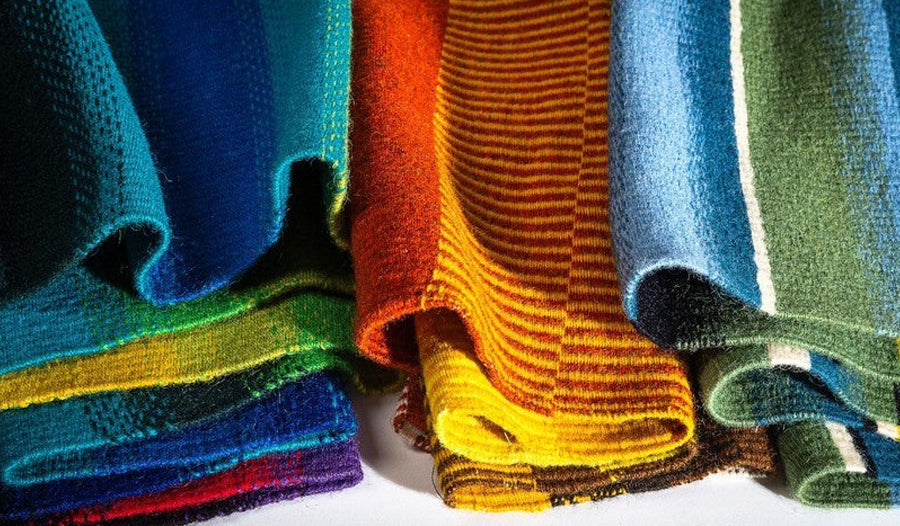
The Forgotten Finnish Raanu

The Finnish raanu is a minimalistic woven textile, where both sides look the same. Mostly comprised of woolen fibres, textiles have clear rhythmic areas of color. The first raanus were made around the 8th century and were used as throws in sleds, boats and beds, and later on as tapestries. Today, new raanus are no longer made, but the hundreds of forgotten ones have found their way from the attics and cellars to upcycled interior design items.

Arctic Horizon, Sunset, Red Berries of the Rowan, Field Landscape, Midsummer Sun, Blue Winter Moment — most raanus have names inspired by nature, just like their color schemes.

The first raanus were naturally dyed, using mushrooms, tree bark and other dyes derived from nature, resulting in beautiful, earthy tones. At the peak of their revived popularity in the 70s, interior design did not hold back on colour, and brown and green walls were decorated with imaginative and bright raanus. At the time they were a popular wedding gift and heirloom with lots of sentimental value.

The raanu craze faded toward the end of 1980s and by 1990 nobody was making raanus anymore. Towards the end of 1980 the raanus created were often of an increasingly pastel colour palette — for me, it would be so interesting to see how the colour schemes and patterns would have evolved along taste lines into the 21st century. All things 70s and 80s seem to be having a resurgence at the moment. Perhaps this means the imminent return of the raanu?
Written by Minna Stubina, Selvedge Orders Coordinator
--
Members of our lovely Selvedge Magazine team have taken the time to write a blog post for us this festive season. It's thanks to all their hard work that we're able to do what we do. Cheers to them!

5 comments
In the seventies, my youth friend brought one to Holland in beautiful red, blue and purple colours. A few years ago i bought two vintage ones in yellow, green, orange and red, nearby in my new hometown. Very happy with them.
I think that the colors of Raanu have been too bright at the moment for Finnish design homes. Last fall I noticed Black-Gray-White versions at Ruukinkehraamo.fi. Last time when Raanu course in Helsingin Työväenopisto was year 2014, so some of new ones have been woven in privately at least in the south of Finland. Nowadays you often see colorful ones in summer cottages or institutions as like as corridors of home caring. Perhaps next generation will design a new version of Raanu which show our nature views in the north.
As an exchange student in Finland in 1971, I learned to weave at a folk school in Turku. My project was a raanu. I chose colors based on the nearby lake, the birches and firs along the shore, the sky and clouds above. Sadly, it got lost in the shuffle of moving over the succeeding years. I still think of it and miss it dearly. Thank you for putting my raanu experience in context.
Thanks for your interesting text! I’m from Sweden and have seen many ”rana” (ranas) as the name is in Sweden and I always thought it was a swedish weaving tradition though from the northern parts. When it was popular in the seventies it was wowen all over Sweden. I think this can be explained by the history of the connection between Sweden and Finland and we have a lot of nordic traditions that i s the same.
I love the colours in the raanus you’ve illustrated, real statement pieces. It’s interesting to learn about the history and how the yarns were died ; so thank you.